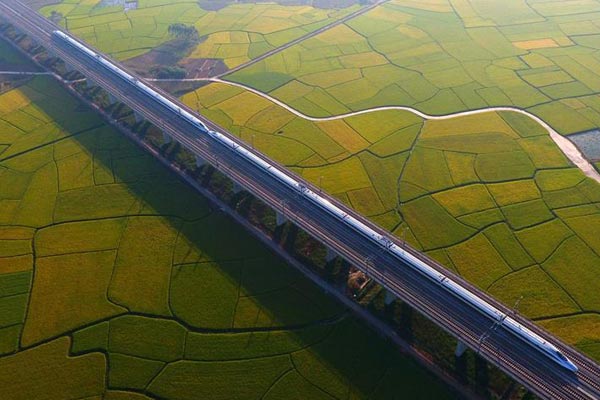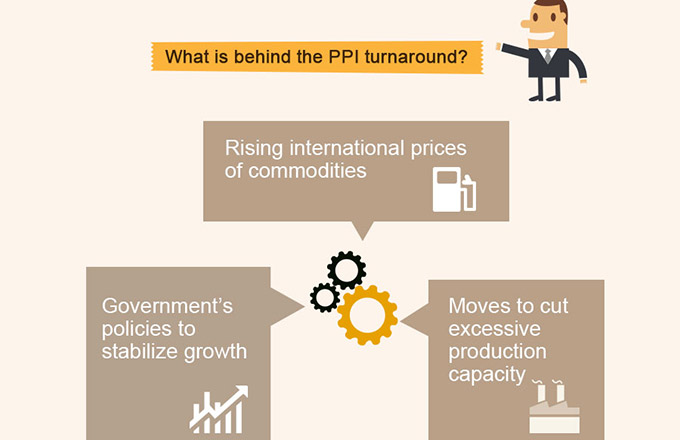Urbanization, growth puts pressure on local governments
Debt issuance will be more cautious and disciplined
While most major economies struggle amid the spreading debt crisis, China seems to have been successfully preserving its own purity and integrity, but questions remain as to how long this can last.
Barclays Capital estimated China's total public debt could be as high as 97 percent, or about 50 trillion yuan ($8.03 trillion), taking into consideration nonperforming loans in the banking system and the pension fund gap.
But Barclays said the chance of a debt crisis in China remains low over the next few years, citing the strong fiscal position of the central government.
What's more worrying is local government debt, which, as is widely acknowledged, has climbed to 12 trillion yuan from 10.7 trillion yuan at the end of 2010.
According to the National Audit Office, 2012 and 2013 are the peak years for repaying local debt. About 42 percent of the local debt had matured by the end of 2012, a year when the growth rate of government fiscal revenue was halved compared to a year before.
The banks have extended three quarters of these matured debts, the Financial Times reported, but another 53 percent would meet their repayment deadline by the end of this year.
![Retired basketball player Yao Ming, a CPPCC member, frowns at the smog as he leaves a hotel in Beijing on Thursday morning. [Liu Guanguan / China News Service] Urbanization, growth puts pressure on local governments](../../img/attachement/jpg/site1/20130301/00221917dead129a355c0d.jpg) |
|
Retired basketball player Yao Ming, a CPPCC member, frowns at the smog as he leaves a hotel in Beijing on Thursday morning. [Liu Guanguan / China News Service] |
"Debt extension is a common measure adopted by local authorities to overcome their liquidity crises, especially amid stringent monetary policy during the first half of 2012," said Zhao Quanhou, head of financial research with the Fiscal Science Research Center at the Finance Ministry.
"But as the monetary policy loosens, there will be less debt extension, but more new borrowing to repay the old loans," he said.
Some analysts are expecting more regulations on local debt after this year's National People's Congress, but Zhao said local debt management would be a long-term effort, so there might not be any breakthroughs in sight.
While admitting there will be cases where local governments face liquidity crises, Zhao said the local debt risk is not yet a threat to the overall stability of the world's second-largest economy.
"It is also based on the judgment that the country still allows its local governments to raise money via debt financing," he said, adding that future debt issuance will be more cautious and disciplined.
In the next five to 10 years, Zhao said, the absolute amount of local debt will still be expanding in line with the economy, but the debt-to-GDP ratio may fall eventually.
The new leadership has repeatedly stressed the role of urbanization in driving future growth, which boosted confidence in the economy but also raised concerns over a new round of over-investment, which could translate to further local government debt.
In this year's economic agenda, 19 local governments have set a growth target of fixed-asset investment above 20 percent, while four are projecting year-on-year growth above 30 percent.
According to Standard and Poor's Rating Services, the need for cash flow of local governments will remain high over the next few years, but facing weakening liquidity positions many could resort to new borrowing.
As a result, S&P said, the default risk of some local governments in China and their financing platforms could rise significantly during the next two years.
"The risks are particularly high for county-level governments that have incurred high-cost, short-term borrowing from non-bank financial institutions," said S&P's credit analyst Kim Eng Tan.
"Some local governments may find themselves trapped in a cycle. They may have to spend more on infrastructure to generate higher receipts from land sales. And that's just so they can reap enough profits from such sales to repay the debt incurred earlier for infrastructure investment."
Yang Tao, a researcher with the institute of finance and banking at the Chinese Academy of Social Sciences, said local government plays a major role in pushing forward China's urbanization process, so an impulse for investment and the growing debt pressure will be in place during the entire 12th Five-Year Plan (2011-15).
Limitations on local financing platforms cannot settle the imbalance between the rising financing demand and shortage in credit supply, Yang said. On the contrary, it may even force local authorities to convert their debt risk into financial risks in other hidden forms.
"Local government impulse for investment is not necessarily a bad thing. Some projects related to people's livelihood, such as affordable housing and urban rail traffic, need such initiatives by local authorities," Zhao said.
While eliminating those unnecessary and not-so-urgent projects, local government should consider introducing more private investors via point-to-point financing, which is also a pathway to break the monopoly in some public sectors, he said.
weitian@chinadaily.com.cn
- China to introduce curbs on rising local debts
- Ratings agency warns about rising debt
- New system to introduce curbs on rising debts at local levels
- Debt alert for local authorities
- China issuers dominate in sales of dollar debt
- Will China have its debt crisis?
- Mainland firms top dollar debt market
- Insurance groups to be allowed to launch subordinated debt






















